Design Process
Define a Problem

In this project, we made a car that would be:
* Solar powered
* Lightweight, so it would not need much voltage or current to accelerate
* And would function reliably
Generate Concepts
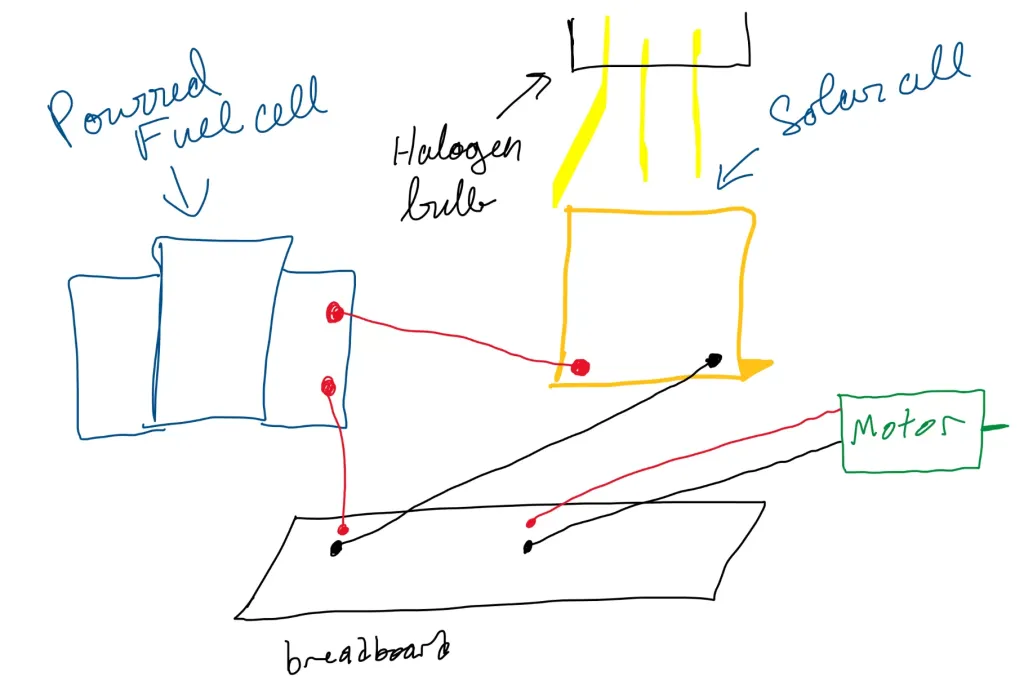
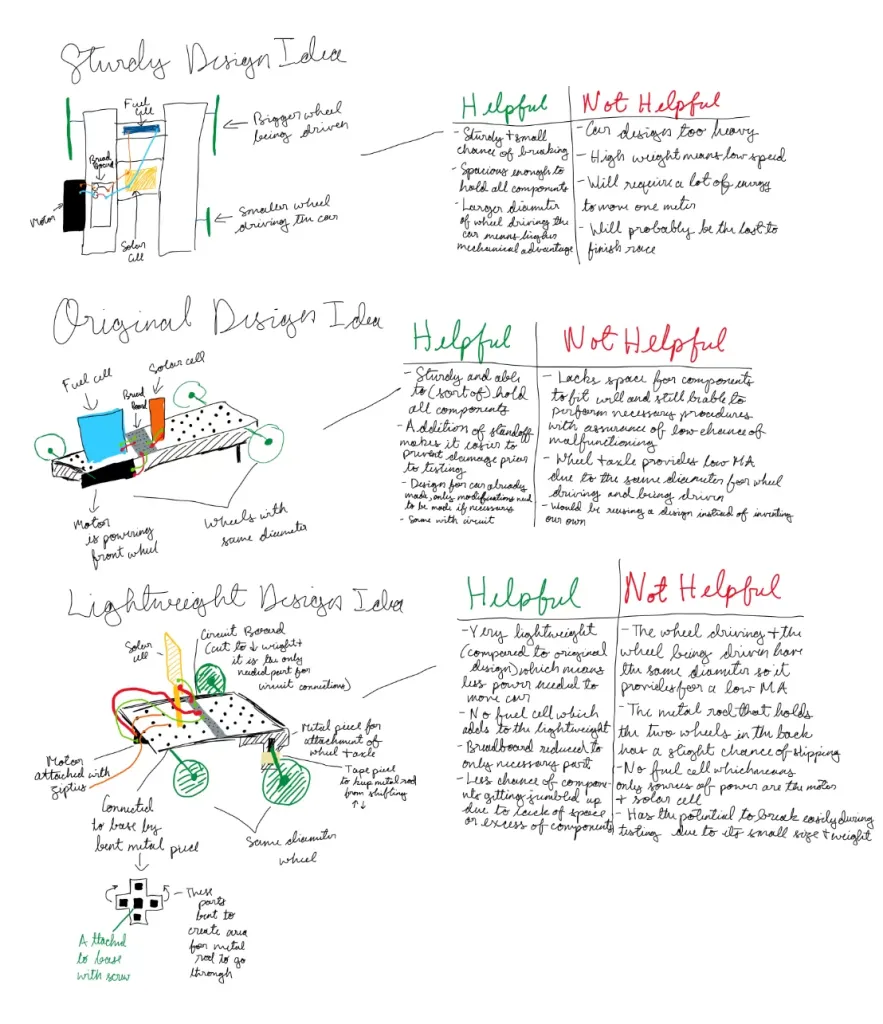
Before we could start building, we had to brainstorm ideas. We could have used the original design, but that would be to large (and boring!).
A sturdy design seemed better, but it would be far too heavy. This would make it inefficient and slow since solar power does not produce high
voltage or current. It would take a very long time for the car to even start moving. So we decided to make a small, lightweight design that
would be easy to move to maximize efficiency.
We did not modify the circuit much, we just made the breadboard smaller since that would save space. The circuit we used was a series
circuit and very simple, as we just connected the solar panel and motor. In between, we had to reverse the polarity of the circuit because we
found out the car was more efficient moving backwards.
We mounted the solar panel vertically due to size constraints. We could not mount it otherwise. Mounting it horizontally would be more
efficient though because the light is more direct.
Develop a Solution
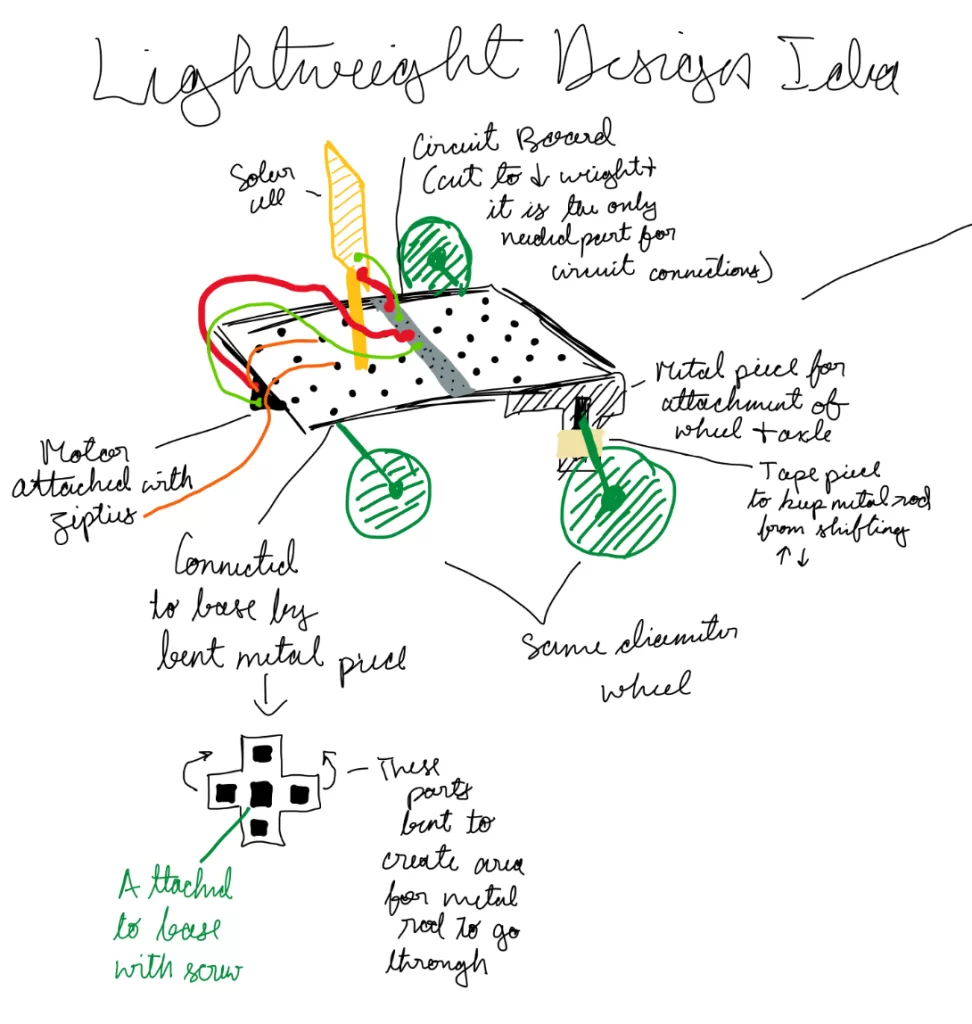
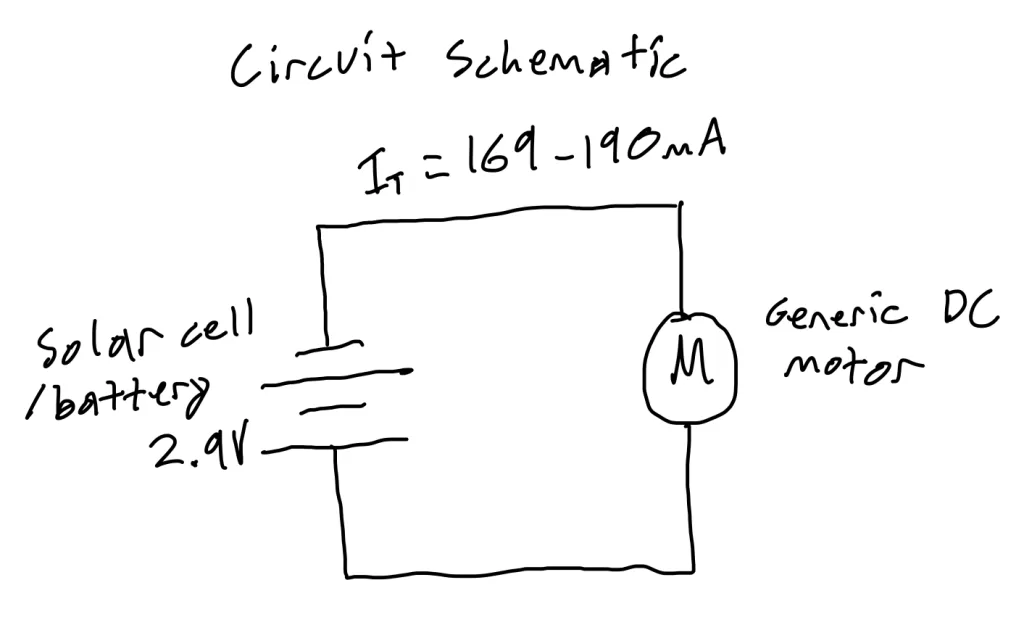
Construct and Test Prototype
We used a solar panel and two AA batteries to provide power to our car. In the beginning, we thought about using a hydrogen fuel cell, but it did not hold a charge for an adequate time frame and was too heavy to be efficient. Hydrogen fuel cells have low energy density. Overall, our car could keep driving for over 2.6 meters in a pretty straight line.
Evaluate Solution
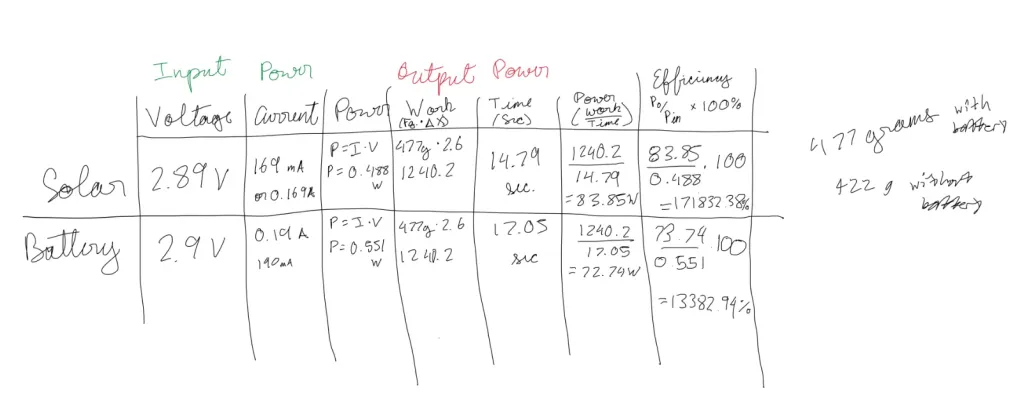
Through this project, I learned about the process by which solar panels use semiconductors to convert UV radiation into usable electricity.
Batteries generally have higher voltages and higher current than solar panels since they are designed to have high energy density.
To use a solar panel effectively, batteries or hydrogen fuel cells must be implemented to store electricity for times of deficit, such as at
night or on a cloudy day. Hydrogen fuel cells do not have a high energy density, meaning they drain very quickly.
This makes batteries the most efficient and effective option for power storage, yet they are not environmentally friendly.
In our tests we measured voltage and current, and calculated input power, work, time to travel two meters, output power,
and finally efficiency. Surprisingly, the solar cell generated almost the same voltage as the battery. Yet it lacked a steady supply of current.
The solar panel fluctuates based on the intensity of the light. We had an extremely high efficiency, so our design is pretty efficient.
To further improve our design, we added a quarter to counteract the tipping of the car towards the area without a wheel.
This acted as a counterweight and ensured our car would not veer off course or fall over.
We probably should have incorporated a gear ratio with a low mechanical advantage to make the car faster, but we did not have enough time.
Our design was also too small for any other enhancements.
We learned about renewable energy sources and how to best design a vehicle to efficiently use scarce power.
Present Solution
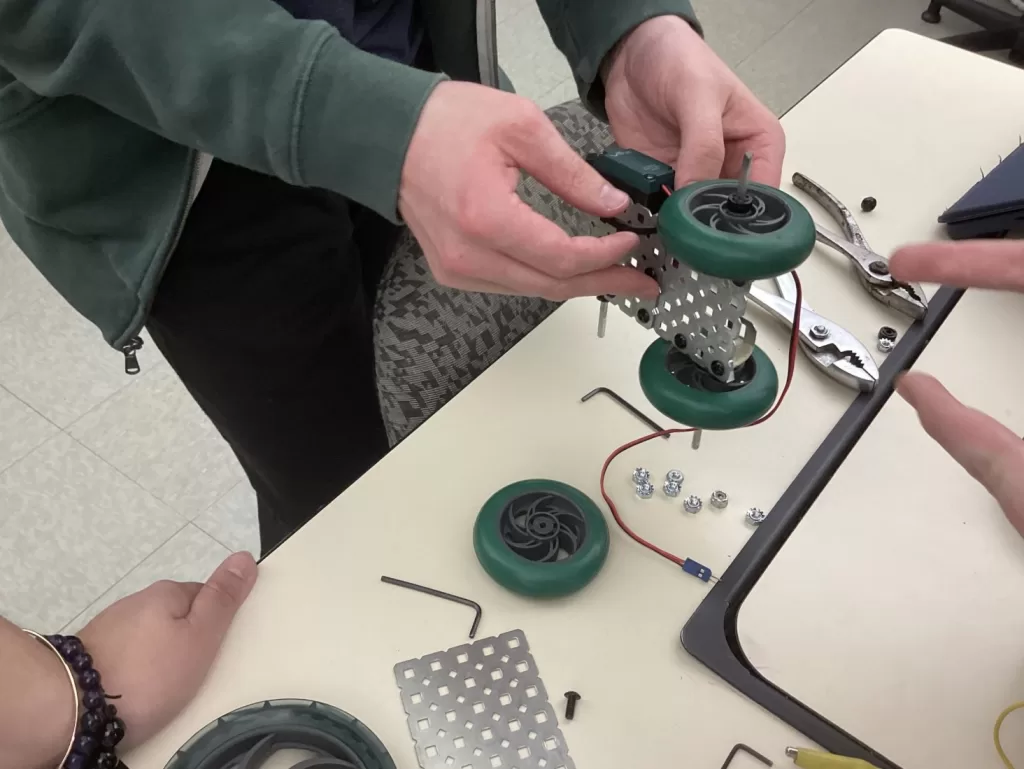
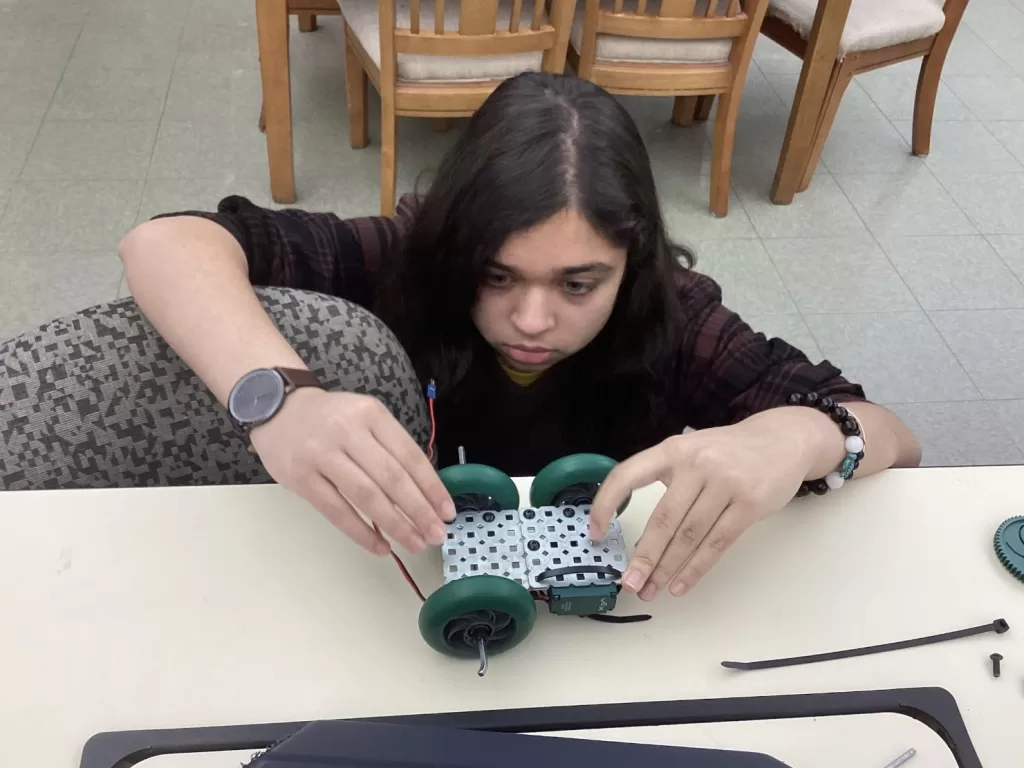

Overall, renewable energy is great since it is always available in abundance. Yet there are a few drawbacks. Renewable energy sources such as solar panels or wind turbines do not generate enough power, at this time, to fully sustain the energy needs of humans. We are still greatly dependent on nonrenewable energy sources for the vast majority of our power. Solar panel fields and gigantic wind farms take up much more land space than their nonrenewable counterparts. Fusion energy seems promising, but for the time being, we will have to make solar, wind, wave power, and other renewable power sources more efficient.